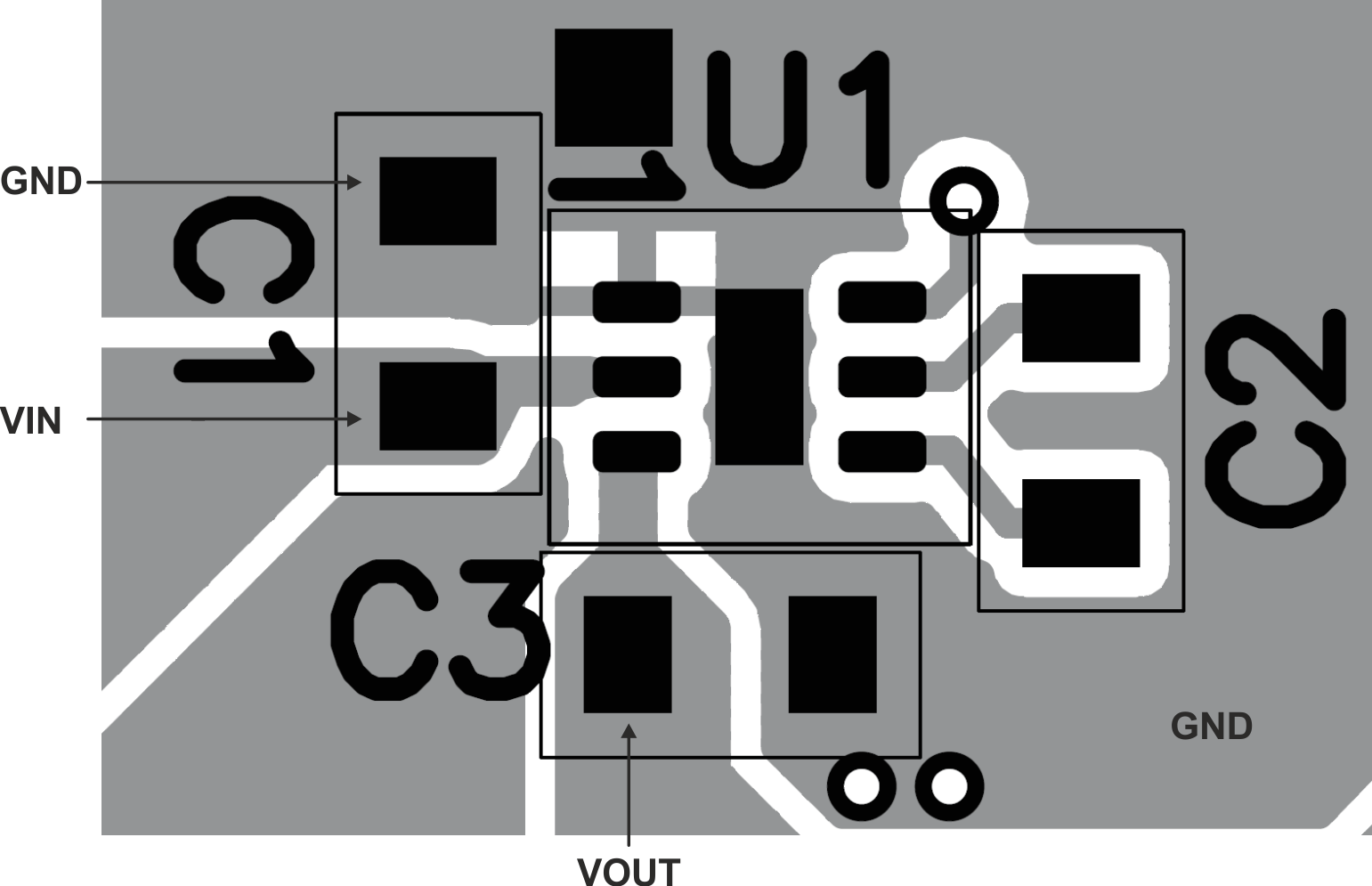SLVS888C December 2008 – October 2015 TPS60150
PRODUCTION DATA.
10 Layout
10.1 Layout Guidelines
Large transient currents flow in the VIN, VOUT, and GND traces. To minimize both input and output ripple, keep the capacitors as close as possible to the regulator using short, direct circuit traces.
10.2 Layout Example
 Figure 24. Recommended PCB Layout
Figure 24. Recommended PCB Layout